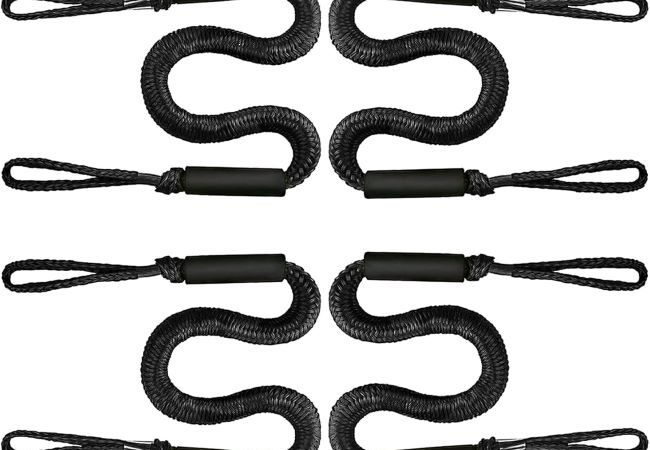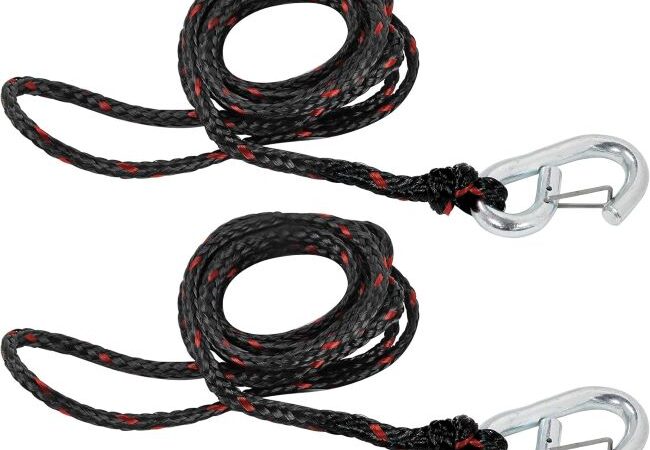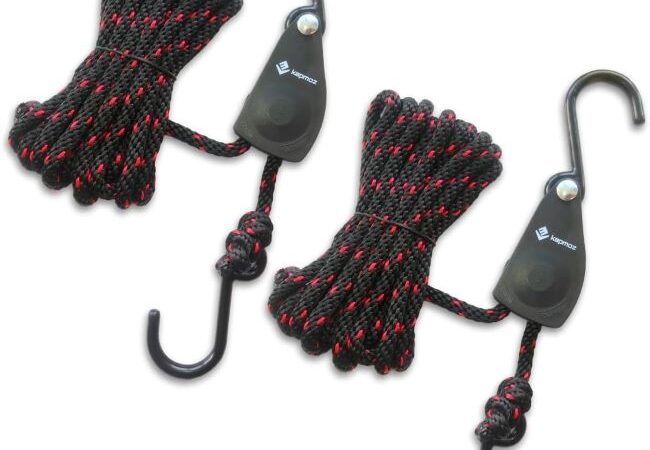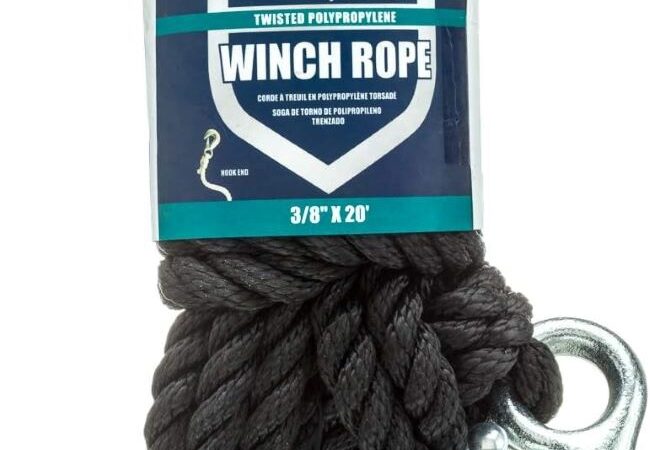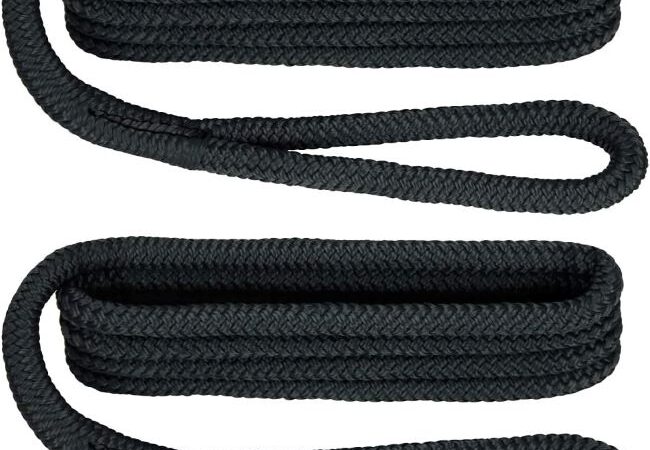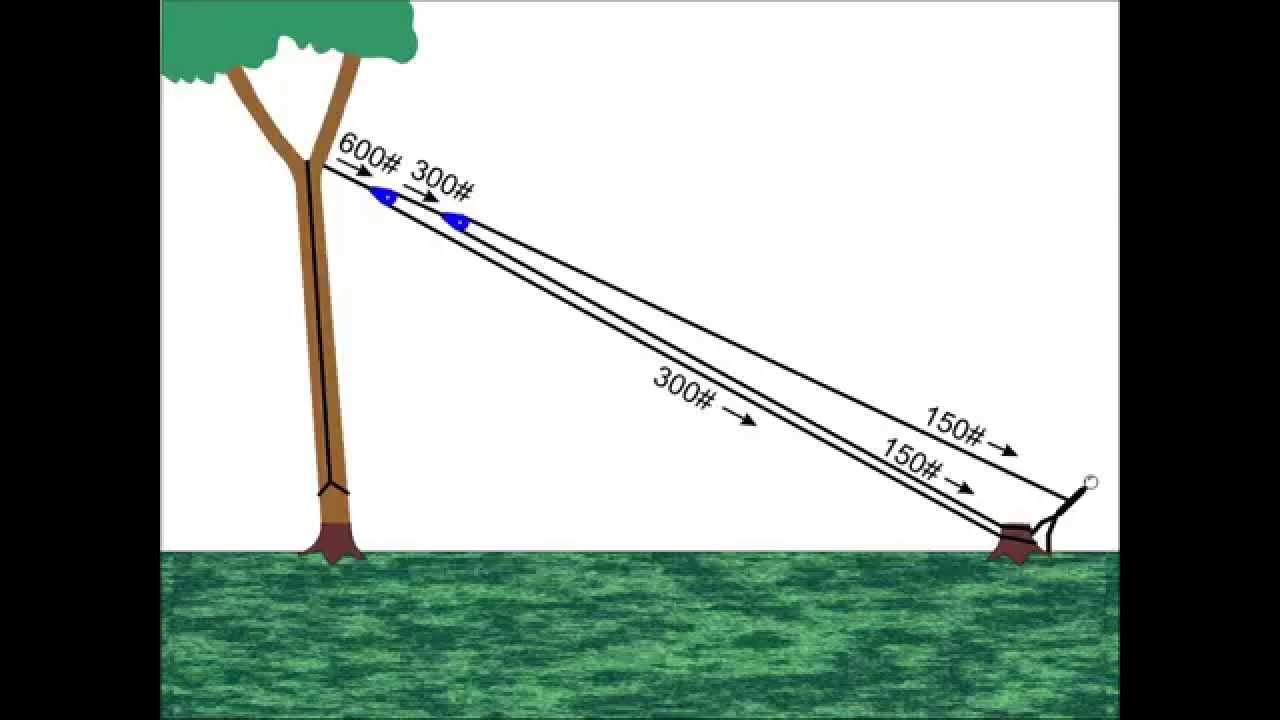
Tree Pull Rope Techniques: Ensure Safe & Efficient Removal
A tree pull rope is essential for safely directing the fall of a tree during cutting. It ensures control and enhances the precision of the felling process.
Contents at a Glance
ToggleTree removal can be a complex task, requiring the right tools and techniques to ensure safety and efficiency. One vital piece of equipment is the tree pull rope, designed to guide the direction in which a tree will fall. This rope, often made of sturdy, high-tensile materials, is a crucial component for arborists and those involved in landscaping or forestry.
It allows the user to apply force at a safe distance, minimizing the risk of injury. Whether you are a professional or a DIY enthusiast tackling tree removal, understanding the proper use of a tree pull rope is paramount. It not only secures the area but also protects the individual and property by offering a controlled and strategic method of bringing down large timber.
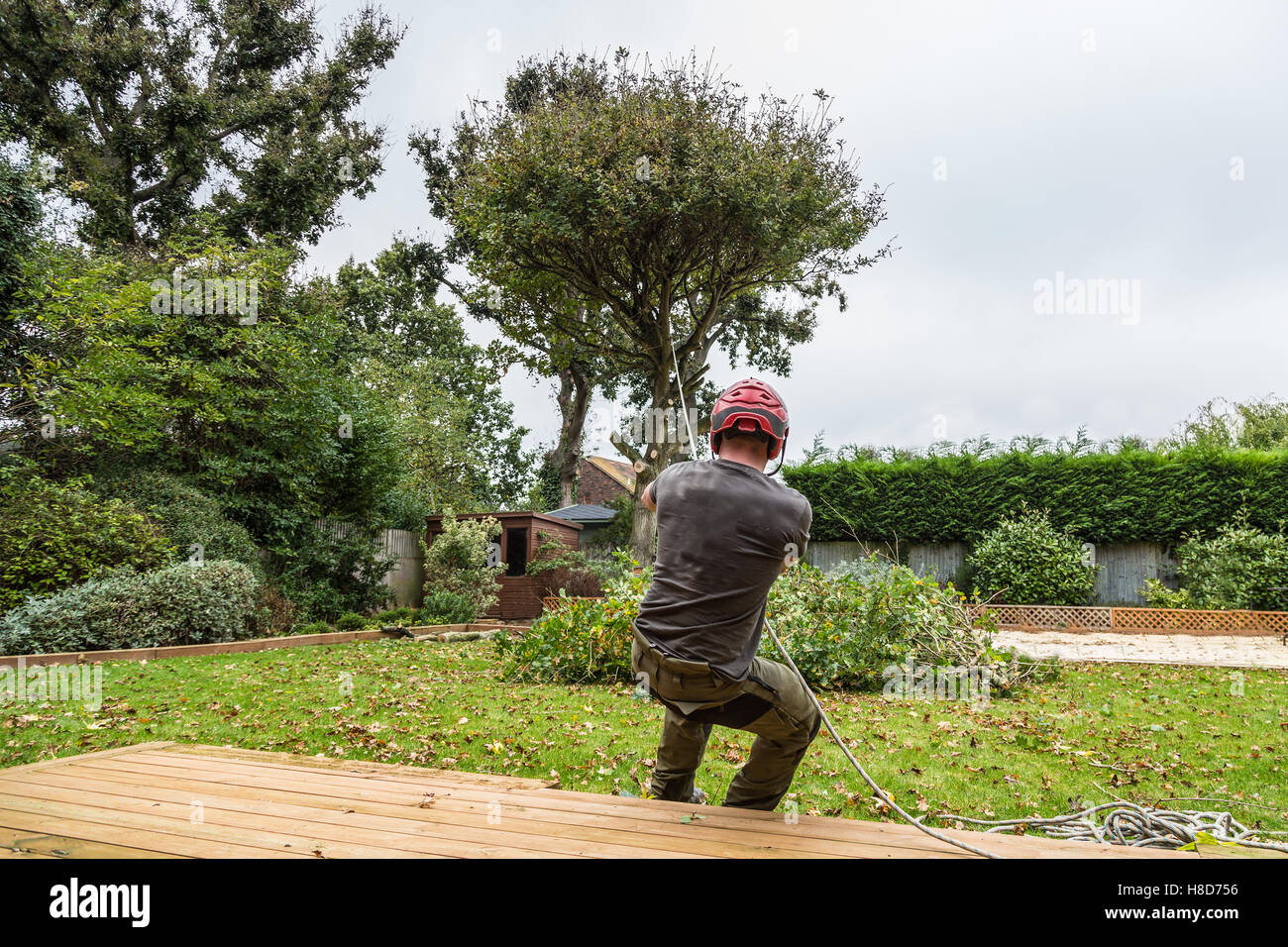
Credit: www.alamy.com
Introduction To Tree Pull Rope Techniques
Welcome to our guide on Tree Pull Rope Techniques. Removing trees safely is crucial. Proper techniques ensure no one gets hurt and no property gets damaged. Let’s dive into the world of tree pulling ropes and learn the best practices for tree removal.
The Importance Of Safe Tree Removal
Tree removal needs careful planning. Falling trees can cause major issues. Safety for people and buildings is top priority. A tree pull rope is a key tool. It helps control the direction of the tree’s fall.
- Prevent accidents: Using ropes can avoid serious injuries.
- Protect structures: Guide the tree away from buildings and vehicles.
- Save surrounding flora: Ensure other plants aren’t damaged.
Basic Concepts In Tree Pulling
Understanding the basics is essential. Tree pulling ropes come in various lengths and strengths. Choose the right one for the tree size. Knots and pulleys are part of the setup. They help manage the force needed to pull down a tree.
| Element | Function |
|---|---|
| Rope Type | Matches tree weight and size |
| Knots | Secure the rope firmly |
| Pulleys | Reduce effort, improve angle |
Start with a strong anchor point. This can be another tree or a vehicle. Then, tie the rope around the tree to be removed. Use a knot that holds but also releases easily after the fall. Position people at a safe distance. They will pull the rope at the right moment.
Tools And Equipment Needed
Engaging in tree removal or maintenance requires the right tools and equipment. Safety comes first, followed closely by efficiency. Let’s explore the essentials for a successful tree pull.
Choosing The Right Rope
The rope is a critical component in tree pulling. Not all ropes are equal. The choice depends on tree size and weight. Key features include:
- Diameter: Thicker ropes handle more weight.
- Material: Polypropylene and polyester resist weather wear.
- Strength: Look for the breaking strength rating.
- Length: Ensure the rope is long enough for the task.
A table may help illustrate the differences:
| Rope Type | Diameter | Material | Breaking Strength |
|---|---|---|---|
| Polyester | 12mm | Synthetic | 5,800 lbs |
| Polypropylene | 10mm | Synthetic | 4,500 lbs |
Essential Safety Gear
Personal safety cannot be overlooked. The following items are essential:
- Gloves: Protect hands from rope burn and cuts.
- Helmet: Shield the head from falling debris.
- Goggles: Keep eyes safe from dust and splinters.
- Boots: Ensure a firm grip on the ground.
An ordered list may help to prioritize safety gear usage:
- Wear gloves to grip the rope securely.
- Put on the helmet before beginning work.
- Wear goggles when near the tree.
- Stand firm in sturdy boots.
Assessing The Tree And Surroundings
Preparing for a successful tree removal starts with a thorough assessment of the tree and its surroundings. This crucial step ensures the safety and efficiency of the process. Proper evaluation helps identify potential hazards and the best approach for using a tree pull rope. Let’s dive into the key aspects of this assessment.
Evaluating Tree Health And Stability
Checking the tree’s health is vital before any removal. A stable tree can be safely roped and controlled. Inspect the tree for signs of disease or decay. Look for dead branches, cracks, or cavities. These may affect the tree’s stability. Identify any lean the tree has, as this influences the direction of the fall. A professional arborist can provide an accurate assessment.
Analyzing The Fall Zone
The fall zone is where the tree will land. It must be clear of structures, power lines, and people. Measure the tree’s height to estimate the fall zone. Mark the area clearly. Make sure the fall zone is at least twice the length of the tree. This precaution minimizes the risk of damage or injury. Plan an escape route for the person cutting the tree. This route should be opposite the fall direction and clear of obstacles.
- Inspect the area for obstacles like buildings, vehicles, or other trees.
- Consider wind direction as it can affect the tree’s fall.
- Ensure the fall zone is free from bystanders.
Rope Anchoring Strategies
Rope Anchoring Strategies are crucial for effective tree pulling. They ensure safety and efficiency during the process.
Selecting Anchor Points
Choosing the right anchor points is vital. Strong, stable points like large trees or sturdy posts work best.
- Check the anchor’s health and stability.
- Avoid dead or diseased trees.
- Ensure the anchor can handle the weight and tension.
Securing The Rope
Securing the rope correctly prevents accidents and ensures success.
- Use appropriate knots like the Bowline or Clove Hitch.
- Double-check all knots before starting.
- Tighten the rope to avoid slack that could snap back.
Knots And Hitches For Tree Pulling
Understanding the right knots and hitches for tree pulling is crucial for safety and efficiency. Strong, reliable knots ensure that the tree falls in the desired direction and minimizes risk to people and property.
Tying The Basic Knots
Basic knots form the foundation of tree pulling. They are easy to tie and untie. Learn these simple knots to start:
- Overhand Knot: A simple knot for adding security at the rope’s end.
- Running Bowline: Creates a noose that tightens around the trunk or limb.
- Clove Hitch: Useful for starting and ending lashings or securing the rope to a point.
Practice these knots repeatedly. Mastery ensures they hold under tension.
Advanced Knots For Extra Security
When dealing with larger trees, advanced knots provide extra security. These knots are more complex but offer greater control:
- Double Bowline: A stronger version of the bowline, great for heavy loads.
- Portuguese Bowline: Offers two loops that are adjustable, ideal for unequal loads.
- Power Cinch Knot: Excellent for ensuring the rope doesn’t slip under strain.
These knots demand practice to ensure they’re tied correctly. Their strength and stability are worth the effort.
Remember: Always inspect your rope and knots before pulling. Secure knots save time and prevent accidents.

Credit: www.amazon.com
Mechanical Advantage Systems
Mastering the use of Tree Pull Ropes with Mechanical Advantage Systems can transform challenging tree work into a manageable task. These systems amplify pulling force, making tree removal safer and more efficient.
Setting Up Pulleys
Setting up pulleys is the first step in creating a mechanical advantage system. Pulleys reduce the effort needed to move an object. Follow these simple steps:
- Attach a pulley to a secure anchor point.
- Thread the tree pull rope through the pulley.
- Ensure the rope moves freely for maximum efficiency.
Multiple pulleys can be used to increase the mechanical advantage.
Understanding Tension And Compression
Knowing how tension and compression work is key. Tension pulls materials apart while compression pushes them together. In tree pulling:
| Tension | Compression |
|---|---|
| Occurs in the pull rope during use | Acts on the tree being pulled |
| Increases with the load | Varies with the angle of pull |
Balance tension and compression for a safe and controlled pull.
Executing The Pull
When pulling a tree, executing the pull correctly is crucial. This step ensures safety and effectiveness. Proper techniques and teamwork make the process smooth. Let’s explore key aspects of executing the pull.
Communication And Teamwork
Clear communication and teamwork are essential. Before starting, discuss the plan with all team members. Use simple signals to coordinate actions. This prevents accidents and ensures everyone is on the same page.
- Assign clear roles to each team member.
- Use whistles or hand signals for communication.
- Ensure everyone stays aware of the tree’s movement.
Controlling The Direction And Speed Of The Fall
Controlling the fall is critical for safety and precision. Use ropes and pull techniques to manage the direction and speed. This helps avoid damage to nearby structures or plants.
| Technique | Function |
|---|---|
| Hinge Cutting | Guides the direction of the fall. |
| Tension in Ropes | Slows the fall, increasing control. |
Start with a small pull to test the setup. Increase force gradually. Always be ready to adjust the pull strength based on the tree’s response.
Post-removal Procedures
Once the tree is safely down, the work isn’t quite done. Knowing what comes next ensures a clean and safe environment. Let’s delve into the steps to take after a tree removal using a pull rope.
Clearing The Area
Remove all debris from the site to prevent accidents. This includes twigs, leaves, and branches. Ensure to check for hidden obstacles in the fallen foliage.
- Sweep the area clean of smaller debris.
- Dispose of waste responsibly, following local regulations.
- Inspect the ground for grooves or damage caused by the tree or rope.
Rope Maintenance And Storage
After a tree removal, proper care of your pull rope is crucial. It extends the rope’s life and ensures safety for future use.
| Step | Action |
|---|---|
| 1 | Inspect the rope for frays or damage. |
| 2 | Clean the rope with mild soap and water. |
| 3 | Dry the rope completely to prevent mildew. |
| 4 | Coil the rope neatly to avoid kinks. |
| 5 | Store in a cool, dry place away from sunlight. |
Follow these tips and your pull rope will be ready for the next big job.

Credit: m.youtube.com
Frequently Asked Questions
What Type Of Rope Is Best For Pulling Trees?
The best rope for pulling trees is a polyester or nylon rope, known for its strength, durability, and stretch resistance.
What Is The Best Rope For Tying Up Trees?
The best rope for tying up trees is a soft, yet durable arborist rope, designed to support tree growth without causing damage.
What Are Tree Ropes Called?
Tree ropes are commonly referred to as arborist ropes or climbing ropes in the context of tree care and climbing activities.
How Do You Pull Down A Tree With A Rope?
To pull down a tree with a rope, choose a strong rope and secure it around the tree’s trunk. Anchor the other end to a sturdy object. Apply consistent force, pulling at an angle in the desired fall direction. Ensure safety by keeping a clear distance as the tree falls.
Conclusion
Selecting the right tree pull rope is crucial for both safety and efficiency in your outdoor tasks. Remember to consider the material, strength, and length based on your specific needs. With the appropriate rope, you can tackle any tree maintenance job with confidence and ease.
Choose wisely and ensure your outdoor work is done smoothly and safely.

